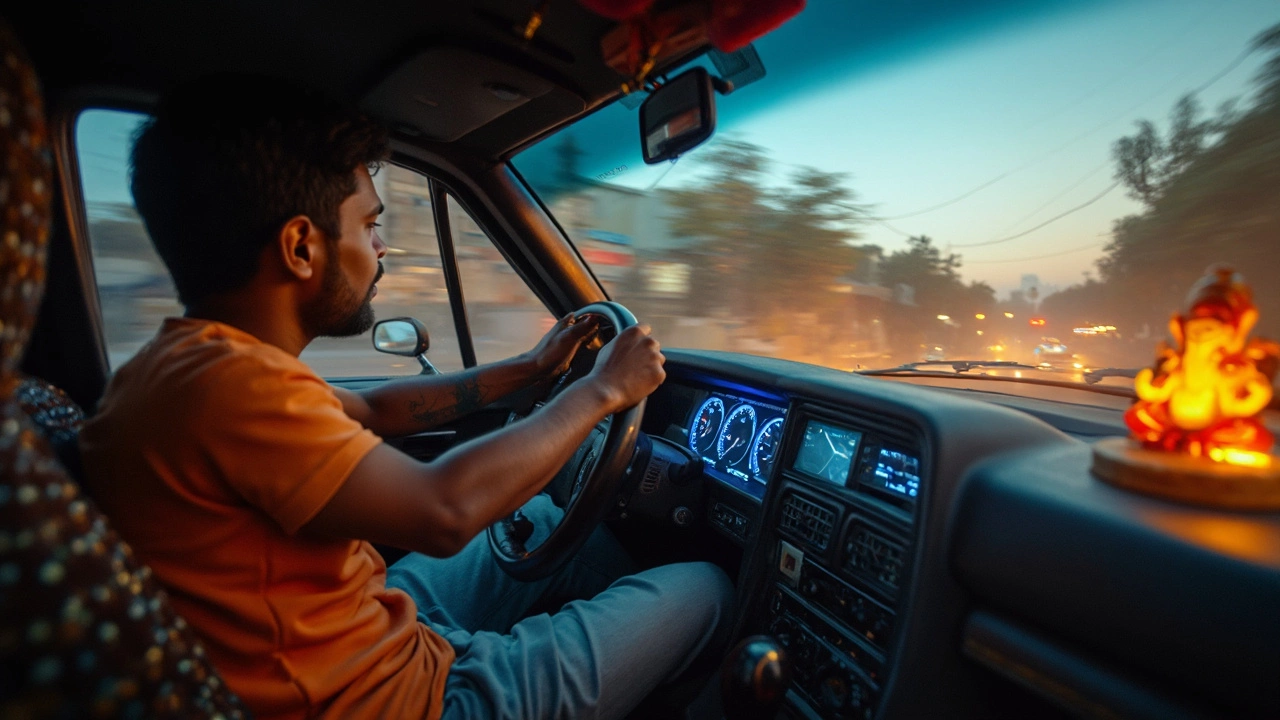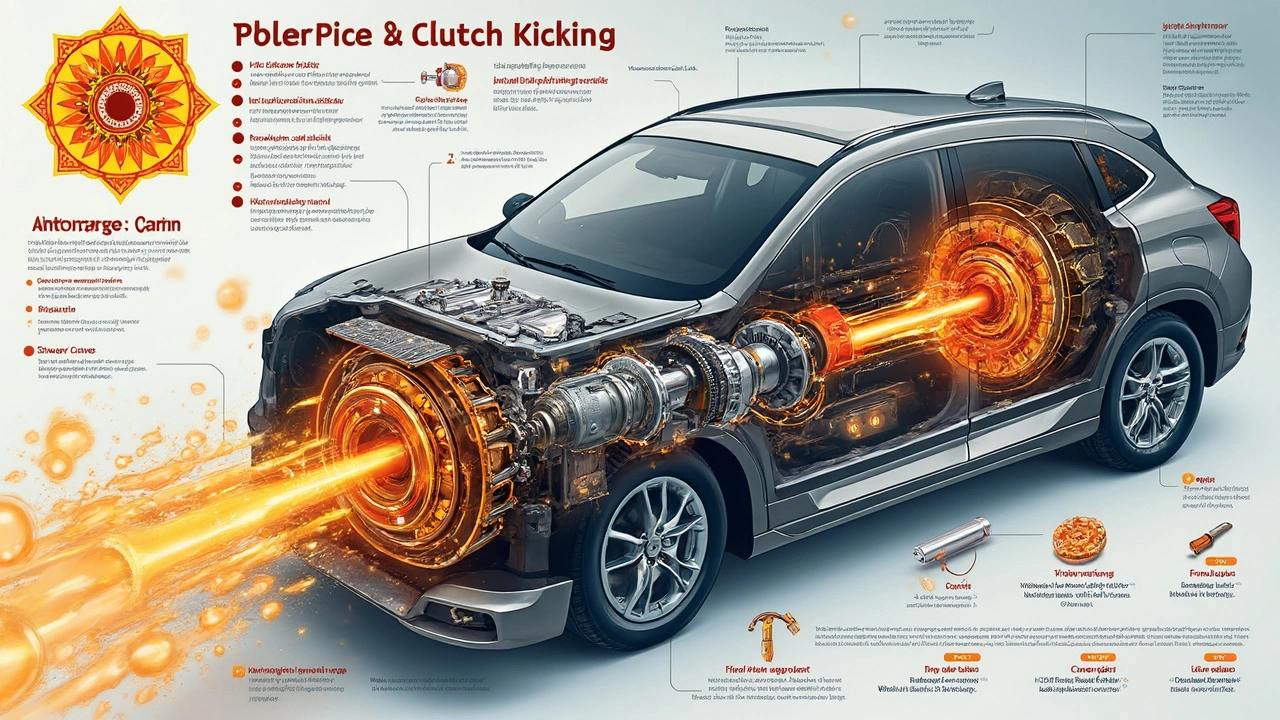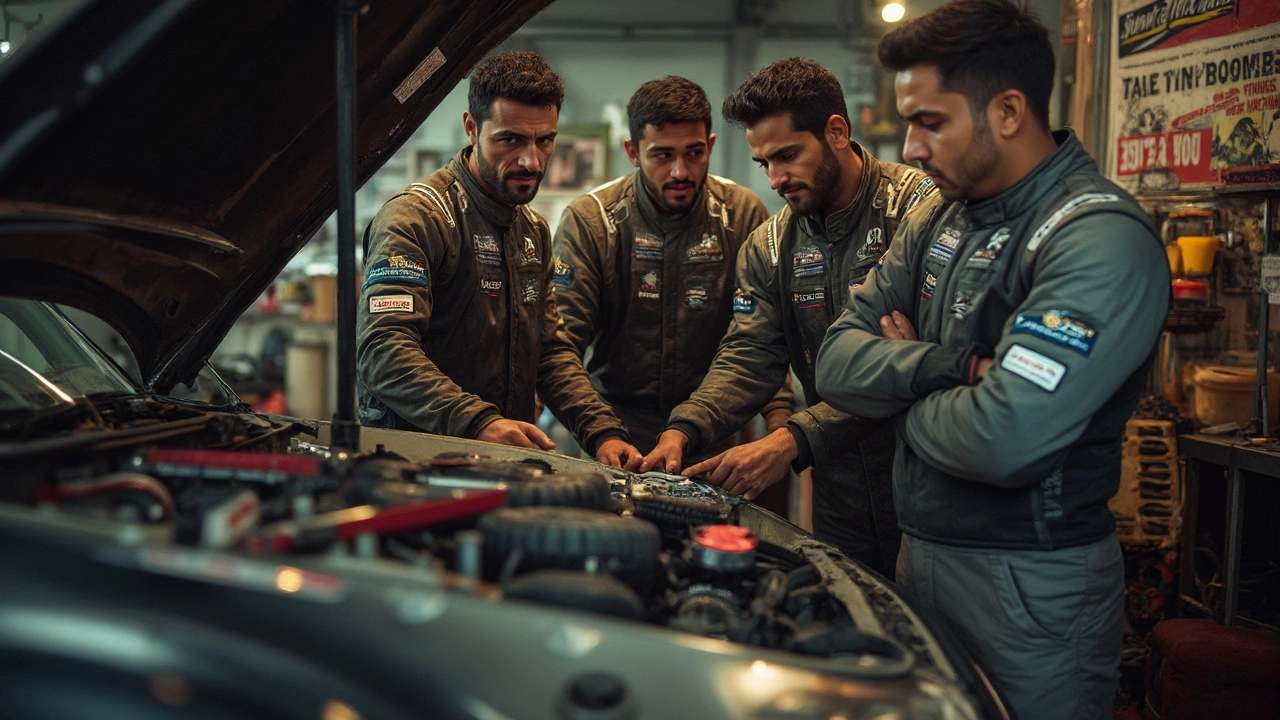 Jun, 4 2025
Jun, 4 2025
Some folks say clutch kicking is like asking for trouble, others swear it's the only way to get sideways fun in a rear-wheel drive. But does clutch kicking really ruin your clutch or is it just another driving myth?
The thing is, any time you force your clutch to connect and disconnect power hard—like when you jab the pedal during a clutch kick—you make the friction material work overtime. Think of it like running your shoes on rough pavement. Eventually, something's going to wear out.
If you’re into drifting, you probably know that clutch kicks wake up the back tires in a flash. But the extra heat and stress from repeated kicks can chew through even a beefy clutch kit. Stock clutches? They usually don’t last nearly as long.
Don’t get scared off yet. There are ways to spot early clutch wear and keep your setup in good shape, even if you love to drive hard. Knowing what to watch and how to drive smarter is a game-changer if you want more seat time and fewer repairs. Ready to get under the hood of this topic? Let’s break it down.
- What Is Clutch Kicking?
- How Clutch Kicking Affects Your Clutch
- Real-Life Signs of Clutch Trouble
- Ways to Make Your Clutch Last Longer
- Is Clutch Kicking Worth It?
What Is Clutch Kicking?
If you watch drifting events or spend time with car enthusiasts, you’ve probably heard people talk about clutch kicking. In simple terms, clutch kicking is a driving move in manual cars—especially rear-wheel drives—where you quickly depress and release the clutch pedal to shock the drivetrain and kick the rear tires loose. It’s a favorite trick for folks who want to break traction for a drift, especially if the engine isn’t super powerful.
This trick works because hitting the clutch briefly disconnects the engine from the wheels. You rev the engine while the clutch is in, then let the clutch pedal out quickly. That sudden connection boosts torque to the rear wheels, giving you the kick you need to slide the car’s rear end. Drifters rely on this move to start a drift or keep it going mid-corner, where extra power can be hard to come by.
Here’s a basic rundown of how a clutch kick looks in practice:
- Approach a corner while rolling in a low or mid gear
- Quickly press the clutch pedal
- Punch the gas to raise engine RPMs
- Snap your foot off the clutch to reconnect power suddenly
- The jolt helps the rear tires break traction, setting up for a drift
You see clutch kicking most in grassroots and pro drift competitions, but it shows up in touge runs and spirited backroad drives too. Some drifters say they’ll clutch kick dozens of times in a single run. But this move is not just for drifting—drivers sometimes use it in rally and autocross to get that snap oversteer when needed.
To get a sense of how common clutch kicking is versus other drift initiation moves, check out this simple breakdown:
| Drift Technique | Used By (%) |
|---|---|
| Clutch Kicking | 68 |
| E-brake Pull | 55 |
| Power Over | 30 |
| Weight Transfer | 44 |
As you can see, clutch kicking tops the list, especially with drivers whose cars don’t have a ton of horsepower. But all that action puts loads of stress on your clutch kit, and that’s why this question about wear always comes up. Next up, let’s get into what’s really happening when you kick the clutch—beyond just the tire smoke.
How Clutch Kicking Affects Your Clutch
Clutch kicking puts way more stress on your setup than regular shifting. The real issue is the sudden burst of power and all the extra friction. When you stab the clutch for that quick kick, you’re forcing the clutch plate and flywheel to slam together fast, sometimes over and over again within a single drift session.
All this action means the friction material on your clutch disc wears down way faster. Heat builds up quickly, and once a clutch gets too hot, it can glaze and lose bite. This is when you start to notice slipping or that burnt smell, which is never a good sign for your wallet.
- Clutch kicking usually shortens clutch life by 30-60%, depending on how aggressive you are and what clutch kit you’re running.
- Stock clutches almost always go out sooner than upgrades designed for performance driving.
- Not just the disc—your throwout bearing, pressure plate, and even the flywheel can suffer with heavy abuse.
Check out how different driving styles compare when it comes to clutch life:
| Driving Style | Typical Clutch Lifespan (Miles) |
|---|---|
| Normal Street Driving | 50,000 - 100,000 |
| Sporty Driving (Occasional Drifting) | 30,000 - 60,000 |
| Frequent Clutch Kicking | 10,000 - 30,000 |
If you notice your engagement point changing, or your pedal starts to feel gritty after a hard day on the track, those are early warnings the clutch is on its way out. You also risk things like clutch chatter and pressure plate fatigue, which can get expensive fast. So, the bottom line? Clutch kicking is hard on your parts—no sugarcoating it. But with the right upgrades and a little know-how, you can reduce how much pain your wallet feels each season.

Real-Life Signs of Clutch Trouble
You don’t always see the damage until it’s too late, but trust me—your car will start dropping hints when the clutch isn’t happy. If you’re into clutch kicking, learning these warning signs saves you headaches later. Most problems sneak up slowly, and you want to catch them before you’re stranded or chewing through clutch kits like snacks.
First up, weird clutch pedal feel. The pedal might get super soft, stiff, or grabby. If it feels different than usual—pay attention. Next, if it starts slipping under throttle, that’s a red flag. You’ll stomp the gas, but the engine revs up more than your speed. That probably means the clutch disc is wearing thin.
You might also notice weird smells, especially something burning after a fast run or a bunch of clutch kicks. Smells like toast? That’s the friction material cooking. Here’s another one: trouble getting into gear, especially reverse or first—classic sign the clutch isn’t disengaging fully. And if you hear rattling or grinding when the clutch is pressed, the release bearing or other parts might be on the way out.
“Even experienced drivers get caught by surprise when their clutch fails—if you notice a burning smell or your pedal starts acting funny, get it checked before it lets you down,” says Chris Forsberg, Formula Drift Champion.
Want a quick look at what can tip you off? Here’s a cheat sheet on common clutch trouble:
| Symptom | What It Means |
|---|---|
| Clutch Slipping | Worn friction disc |
| Burning Smell | Overheating clutch parts |
| Grabbing or Sticking Pedal | Possible hydraulic issue or warped disc |
| Difficulty Shifting Gears | Clutch not disengaging |
| Noises When Pressed | Possible release bearing or pressure plate problems |
If you notice more than one of these popping up, it’s probably time to budget for new clutch parts or at least a detailed inspection. Waiting too long can kill your flywheel too, and that’s never cheap.
- If the clutch slips in higher gears, swap it soon—damage only gets worse.
- That burning smell after driving hard? Cool down before you drive again.
- Grinding gears? Stop clutch kicking until you fix it.
Get in the habit of checking pedal feel every drive, and sniff around for any new odors after you park. Spotting issues early gives you the best shot at keeping your clutch alive even if you’re having fun out there.
Ways to Make Your Clutch Last Longer
If you want your clutch to survive more than a couple of rowdy weekends, it’s time to pay attention to a few key habits. The way you treat your car matters way more than just the brand logo on your clutch kit.
- Clutch kicking is tough on parts, so save it for when you really need it—like breaking traction, not just for show.
- Don’t rest your foot on the clutch pedal while cruising. This is called “riding the clutch,” and it wears the pressure plate and bearing even when you’re not shifting.
- When you shift, push the clutch all the way in every time. Half-hearted presses lead to slippage and uneven wear.
- If you’re into drifting or frequent hard launches, consider investing in a performance clutch kit designed for higher stress. Stock clutches just aren’t built for repeated abuse.
- Let the clutch cool down after intense driving sessions. Heat is the enemy—once it cooks, the friction material gets brittle fast.
Curious about how much clutch kicking really speeds up wear? Check out this table comparing average clutch life expectancy:
| Driving Style | Average Clutch Life (miles) |
|---|---|
| Normal (city/highway) | 50,000 - 100,000 |
| Occasional performance (rare clutch kicks) | 30,000 - 50,000 |
| Heavy drifting/clutch kick abuse | 5,000 - 20,000 |
There’s no magic to it: drive hard, expect to replace parts more often. But smart habits, better parts, and watching for signs of trouble can help you squeeze more life out of every clutch. And hey, always listen for weird noises or changes in pedal feel—catching a problem early can save you a lot of money down the line.

Is Clutch Kicking Worth It?
This is the big question for anyone who loves to toss a car sideways—does the thrill of clutch kicking beat the costs? Let’s check the facts before you go shredding rubber and burning up your clutch.
First off, no other technique gives you the same instant shift in car balance for drifting as a good clutch kick. That burst of wheel spin is fun and gets you right into slide mode, which is exactly why pro drifters use it. Guys at the grassroots level, and even in Formula D, rely on clutch kicks to keep their cars sideways at lower speeds or when horsepower isn’t enough. It’s not just a beginner’s move—everyone from beginners to seasoned drivers does it.
But there’s a tradeoff. Clutch kits, especially stock ones, aren’t built for that kind of repeated shock. Pre-2020 sports compacts like the Subaru BRZ or Nissan 350Z often burn through a stock clutch in a season or less when used for clutch kicking at events. An upgraded clutch kit or twin-disc setup lasts longer but isn’t cheap; you’re looking at $600 or more for a quality streetable kit, and double that for heavy-duty setups.
If you use clutch kicking mostly on weekends and combine it with smooth driving the rest of the time, you’ll get way more life out of your clutch. On the flip side, daily clutch kicking, even just for fun at lights, will send you shopping for new clutch parts way sooner than you planned.
- If drifting and fun driving are your priority, clutch kicking is worth the costs—just budget for the extra wear.
- If you need your car for daily commuting and don’t want repair bills, save clutch kicking for the track.
- Upgraded parts are a must if you go hard with clutch kicking, but they won’t make your car bulletproof.
So is it worth it? For passionate drivers who love the thrill, absolutely. Just don’t expect your clutch to last forever. Keep some cash aside for maintenance, and know what you’re getting into when you stomp on that pedal.